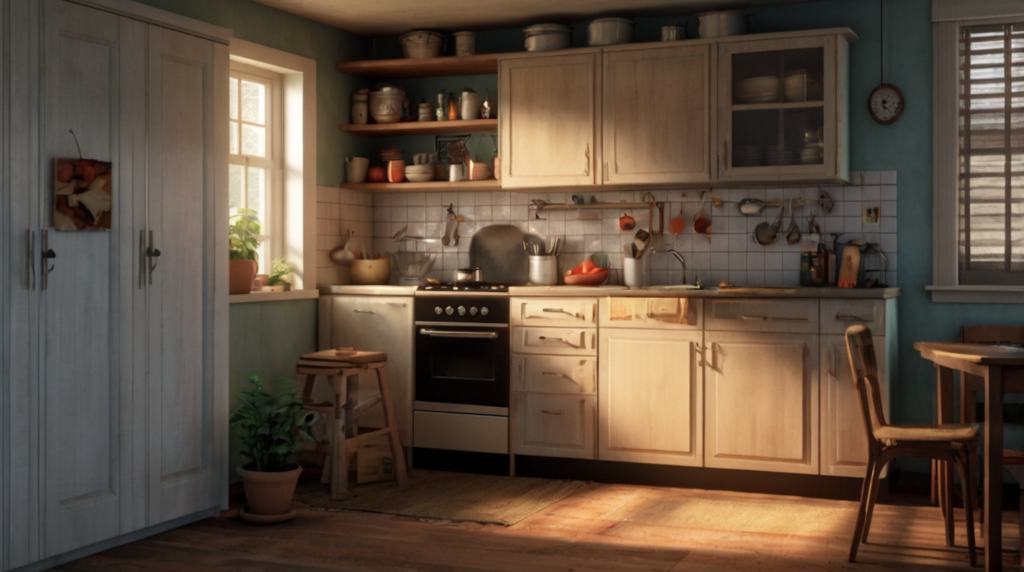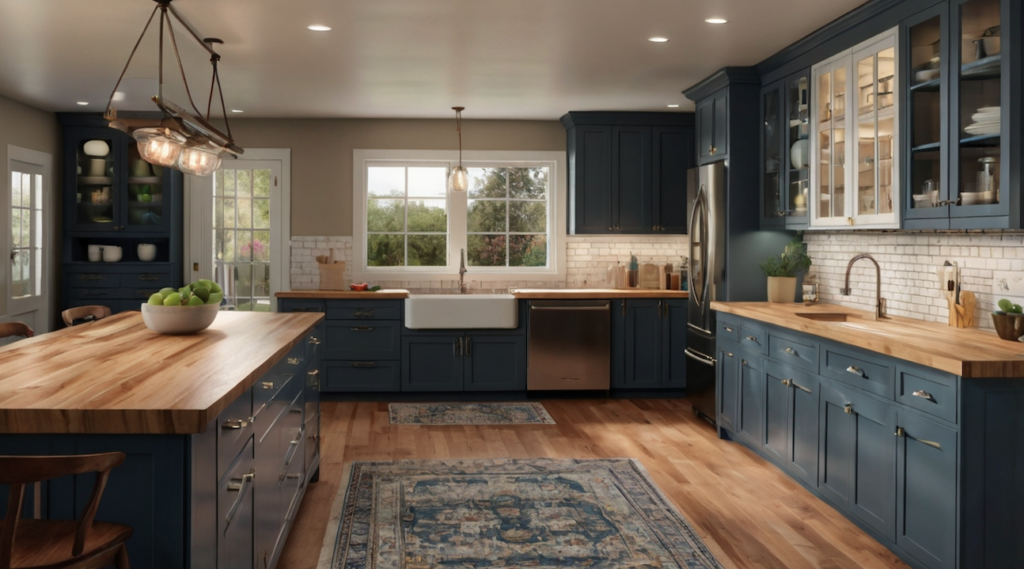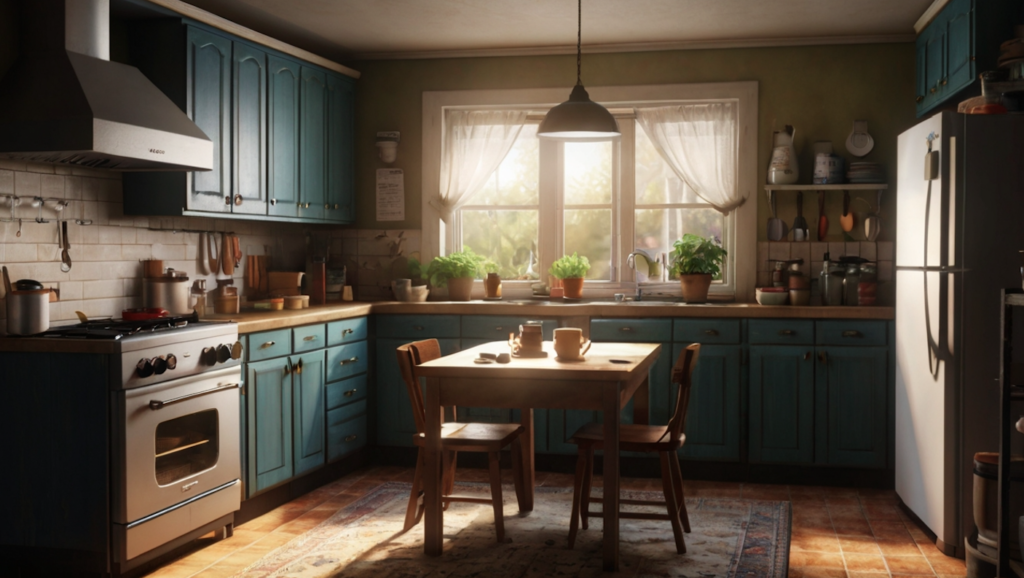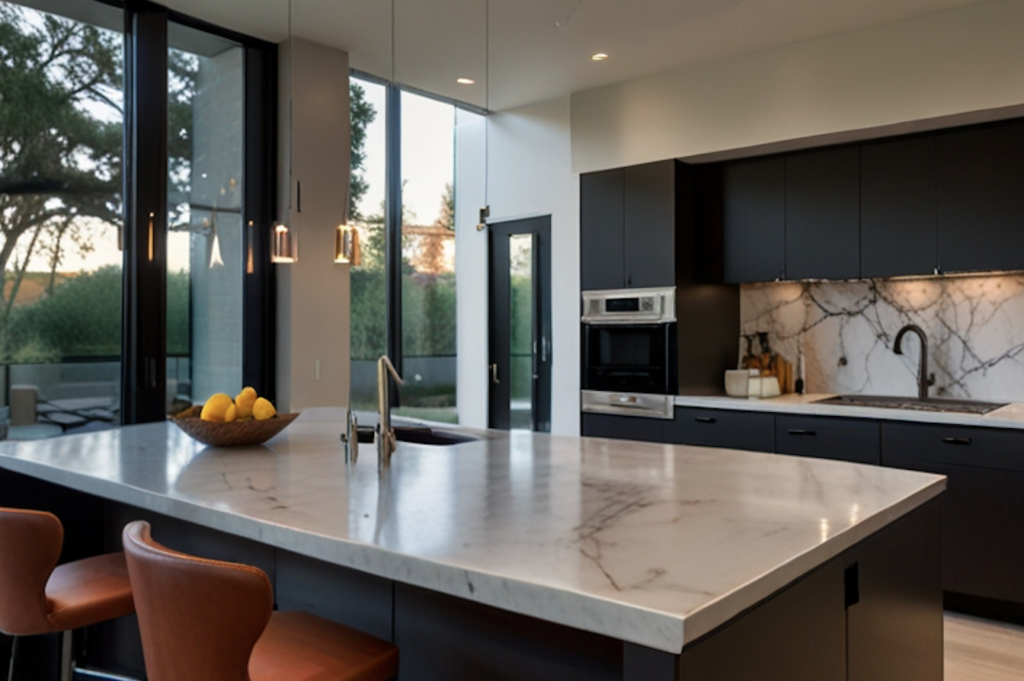Embarking on a kitchen renovation project is an exciting endeavor, offering the opportunity to create a space that reflects your style and optimizes functionality. However, even the most well-intentioned homeowners can fall victim to common design mistakes that can hinder the kitchen’s efficiency and enjoyment. This article explores these potential pitfalls and provides smart solutions to ensure your kitchen remodel is a resounding success.
The cornerstone of a well-designed kitchen is a functional layout that caters to smooth workflow.
Mistake 1: The Kitchen Work Triangle
A fundamental principle in kitchen design is the kitchen work triangle. This imaginary triangle connects the three most frequently used zones: the sink, the cooktop, and the refrigerator. The efficiency of your kitchen layout hinges on the placement of these elements.
An improperly designed work triangle, with excessive distances between the key zones, can lead to wasted steps and frustration. Imagine constantly backtracking between the fridge on one side of the room and the sink on the other while prepping a meal – not an ideal scenario.
Solution: For optimal workflow, aim for a compact kitchen work triangle with a total distance between the sink, cooktop, and refrigerator between 12 and 22 feet. This allows for effortless movement and minimizes unnecessary steps during food preparation and cleanup.
Mistake 2: Appliance Avalanche.
Many homeowners underestimate the importance of accurately measuring their existing appliances and planning for adequate clearance during the design phase. While that new refrigerator might look stunning in the showroom, neglecting its actual dimensions can lead to major headaches down the line.
Imagine this: You’ve installed your dream kitchen, only to discover the oven door can’t fully open because the countertop is too close to the wall. Or, the dishwasher door slams into the adjacent cabinet when opened. These seemingly minor miscalculations can significantly impede functionality and create daily frustration.
Solution: Before finalizing your kitchen layout, meticulously measure all of your appliances, including their depth with the doors open. Factor in clearance space for comfortable operation. A standard recommendation is to allow 42 inches of clearance between opposing countertops to ensure easy movement and unobstructed access to appliances. By planning for adequate clearance from the outset, you can ensure your new kitchen is not only stylish but also highly functional.

Mistake 3: Ignoring Traffic Flow.
A kitchen is a dynamic space, often hosting multiple people moving around for various tasks. Neglecting traffic flow during the design phase can lead to congestion and frustration, especially in smaller kitchens. Imagine multiple cooks bumping elbows while preparing a meal, or someone trying to navigate around an open cabinet door to reach the refrigerator. Not exactly a recipe for a harmonious culinary experience.
Solution: When planning your kitchen layout, consider traffic flow and designated pathways between key work zones. Here are some smart strategies to optimize traffic flow:
- Clear Aisles: Maintain a minimum clearance of 36 inches between opposing countertops or cabinets to allow for comfortable passage of one or even two people.
- Smart Appliance Placement: Avoid placing appliances directly opposite each other, like the oven and refrigerator. This creates bottlenecks and hinders movement.
- Peninsula Placement: If you’re opting for a peninsula, ensure it doesn’t obstruct the main traffic flow through the kitchen. Leave ample space for people to walk around it comfortably.
By incorporating these tips and carefully planning traffic flow during the design phase, you can create a kitchen that fosters smooth movement and a more enjoyable culinary experience for everyone.

Mistake 4: Underestimating Storage Needs
We’ve all been there – staring into a cluttered kitchen, yearning for more space to stash away appliances, dishes, and pantry staples. One of the biggest downfalls for homeowners is underestimating their storage requirements. A beautiful kitchen filled to the brim with overflowing cabinets and countertops is not only aesthetically unpleasing but also impractical for everyday use.
Solution: Before embarking on your remodel, take a realistic inventory of your existing cookware, dishes, appliances, and pantry items. Consider your cooking habits and how much storage you’ll realistically need. Here are some smart ways to maximize storage space:
- Cabinetry with Pull-Out Drawers: Deep base cabinets can become black holes for forgotten items. Opt for cabinets with pull-out drawers or shelves that extend fully, providing easy access to everything in the back.
- Pantry Organization Systems: Don’t underestimate the power of pantry organization systems! Utilize shelving dividers, lazy susans, and under-shelf baskets to maximize space and keep your pantry items neatly organized and readily accessible.
- Under-Counter Storage: Don’t let valuable storage space go to waste! Utilize built-in drawers or pull-out shelves underneath the counter for frequently used items like pots, pans, or baking sheets.
- Cabinet Inserts: Cabinet inserts are customizable organizers that install within existing cabinets, maximizing their functionality. Consider divider inserts for plates and bowls, pull-out spice racks, sliding shelves for small appliances, or tiered organizers for pots and pans.
- Pot Racks: For easy access to your most-used pots and pans, consider installing pot racks. These come in various styles, including wall-mounted pot racks, ceiling-mounted pot racks, and over-the-counter pot racks. Choose a style that complements your kitchen layout and offers easy reach for your frequently used cookware.
By incorporating these storage solutions and carefully planning your cabinet layout, you can create a kitchen that keeps everything in its designated place, promoting efficiency and a clutter-free environment.

Mistake 7: Sole Reliance on Overhead Lighting
Overhead lighting is essential, but it shouldn’t be your only source of illumination in the kitchen. A single overhead light can create shadows and poorly lit areas, making meal prep and cleanup a chore. Imagine struggling to see the contents of your drawers or chopping vegetables in a dimly lit workspace. Not ideal, right?
Solution: Embrace the concept of multi-level lighting in your kitchen. This involves layering different types of lighting to create a balanced and functional illumination scheme. Here are some key elements:
- Task Lighting: Under-cabinet lighting is a game-changer. These lights installed beneath your cabinets cast a bright glow on countertops, eliminating shadows and illuminating your work zone for tasks like prepping ingredients or cooking.
- Pendant Lights: Pendant lights hung strategically over sinks, islands, or breakfast nooks provide focused task lighting and add a touch of style. Choose pendant lights that complement your kitchen’s overall design aesthetic.
- Ambient Lighting: Don’t forget ambient lighting! This provides general illumination throughout the kitchen. Consider recessed lighting, sconces, or even strategically placed lamps to create a warm and inviting atmosphere.
The Power of Natural Light: In addition to multi-level lighting, maximize the natural light potential of your kitchen. Natural light brightens the space, reduces dependence on artificial lighting, and boosts your mood and sense of well-being. When planning your kitchen layout, consider:
- Window Placement: Strategically placed windows can significantly enhance natural light inflow. Think about the sun’s path throughout the day and position windows to capture morning or afternoon sunlight. Larger windows will naturally admit more light, but even strategically placed smaller windows can make a big difference.
- Skylights and Roof Windows: For kitchens with limited wall space, skylights and roof windows can be brilliant solutions. These strategically placed windows usher in natural light from above, illuminating your kitchen from a whole new perspective.
By implementing a multi-level lighting plan and maximizing natural light potential, you can create a kitchen that is bright, functional, and uplifting.
Mistake 9: All Style, No Substance
It’s easy to get swept away by the allure of trendy materials, but remember, your kitchen is a high-traffic zone**. Opting for style over substance can lead to regrets down the line. Imagine a beautiful marble countertop that becomes permanently stained after a single spill of red wine, or a delicate wood floor easily marred by dropped utensils. Not exactly a recipe for a stress-free kitchen experience.
Solution: Choose kitchen materials that are durable and easy to maintain. Here are some key considerations:
- Countertops: Popular countertop choices include granite, quartz, and porcelain tile. These materials offer durability, stain resistance, and ease of cleaning. Consider your budget, lifestyle, and aesthetic preferences when making your selection.
- Flooring: The kitchen floor needs to withstand moisture, spills, and heavy foot traffic. Opt for water-resistant materials like ceramic tile, luxury vinyl plank flooring, or engineered hardwood. These options are durable, easy to clean, and come in a variety of styles to suit your taste.
- Backsplash: The backsplash protects your walls from splatters and stains. Choose a material that’s easy to clean and maintain. Popular options include ceramic tile, stainless steel, and tempered glass.
Remember: Striking a balance between style and functionality is key. Don’t be afraid to explore beautiful materials, but ensure they can withstand the rigors of everyday kitchen use.
Mistake 10: Forgetting the Fifth Wall
The ceiling is often the forgotten element in kitchen design. A plain white ceiling can feel sterile and uninspiring. However, incorporating some thought into your ceiling design can elevate the entire space.
Solution: Don’t neglect the fifth wall! Here are some ways to utilize your ceiling to enhance your kitchen’s design:
- Painting: A simple yet effective solution is to paint your ceiling a light color. This visually expands the space and creates a more airy feel. Consider pale shades of white, cream, or light blue to complement your overall color scheme.
- Decorative Elements: For kitchens with high ceilings, explore decorative elements like coffered ceilings. These add visual interest and architectural detail, elevating the space. However, ensure your ceiling height can accommodate coffered ceilings without making the room feel oppressive.
Remember: The key is to maintain proportions and cohesion with your overall design scheme.
Conclusion
By avoiding these common design mistakes and implementing the smart solutions presented throughout this article, you can transform your kitchen into a functional, beautiful, and enjoyable space. Remember, careful planning is essential. Consider your lifestyle, needs, and budget when making design decisions. Don’t hesitate to seek professional advice from architects, designers, or experienced contractors to guide you through the process. With the right approach, your dream kitchen can become a reality, a space that fosters culinary creativity, warm gatherings, and lasting memories.
We hope this comprehensive guide empowers you to embark on your kitchen renovation journey with confidence!




